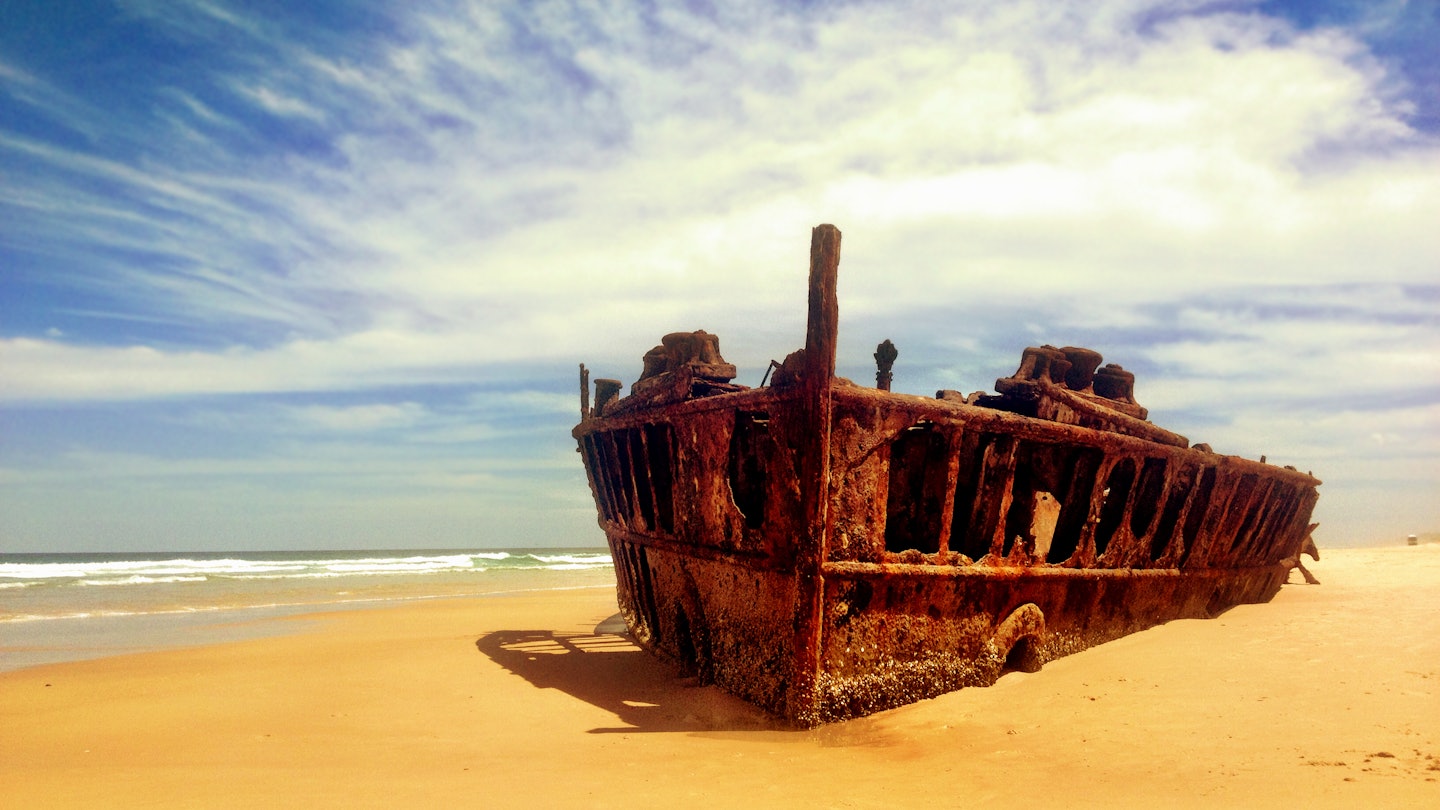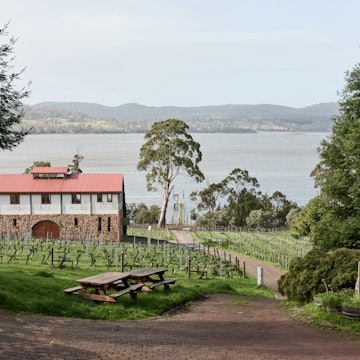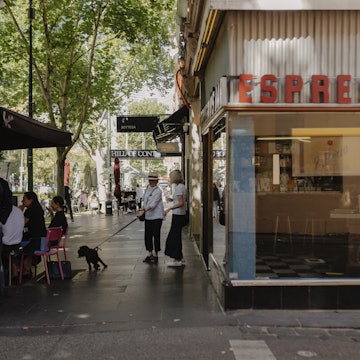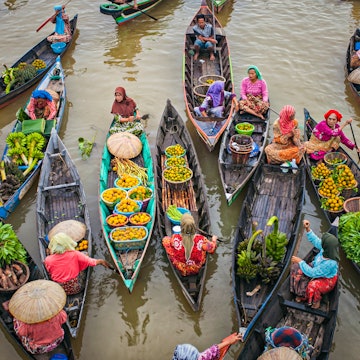

The Ss Maheno is one of the island's top sights. ©Odair Faléco/500px
There’s something quite magical about first stepping foot on Fraser Island. Stretching over 120km, this raw, rugged sand island – the world’s largest – off Queensland’s southeast coast feels utterly otherworldly.
With its wild untamed beaches, towering old-growth forests, crystal-clear freshwater lakes, and bountiful wildlife including Fraser’s most famous resident, the dingo, this Unesco-listed island offers one of Australia’s best wilderness adventures. It's currently open to visitors (as of August 2020) but there may be some restrictions on interstate travel. Please check local restrictions before booking a trip and always follow government advice.
Half the fun of visiting Fraser Island, which lacks sealed roads, is the challenge of driving in the national park. It’s for this reason that many visitors opt for an organised tour from the mainland. Travelling here independently, however, gives you the flexibility to explore the breathtaking island at your own pace, and cranks up the adventure factor big time.

There are two ways to access Fraser, located about 300km north of Brisbane. Most visitors take the Manta Ray barge that runs continuously between Inskip Point (which has a picturesque beachfront campground) and Fraser’s southern tip from 6am to 5.15pm daily. The 10-minute journey costs AU$130 return (per car) as of August 2020. Booking ahead is recommended.
The other option - aside from landing on the beach in a tiny Air Fraser Island plane - is Fraser Island Barges which runs less frequent daily services from River Heads (20 minutes south of Hervey Bay) to Wanggoolba Creek and Kingfisher Bay Resort on the west side of the island (both services from $180 return per car; about 50 minutes journey time).
What you need for driving on Fraser Island
Driving anything other than a 4WD with low-range capacity and high clearance onto Fraser is strongly discouraged. This isn’t to say you can’t take your SUV, but the likelihood of damaging the underside of your vehicle on the island’s bumpy roads or getting bogged in sand is much greater, especially if you don’t have much experience driving on sand. If your insurer doesn’t cover off-road driving, you’ll face a hefty bill to have your car towed off the island.
If you don't have your own wheels, there are also several companies in Hervey Bay that specialise in renting 4WD vehicles for touring Fraser. Rental companies can often organise necessary vehicle permits through the Queensland National Parks office for you, and help with ferry and campsite bookings.

What to pack for Fraser Island
For you:
There are several supply shops on Fraser’s east coast – at the main settlement of Eurong (which also has a bakery and a pub), Happy Valley, Cathedrals and Orchid Beach, all of which sell fuel, ice and basic supplies – but it’s advised to bring everything you’ll need for the duration of your visit, including water (for drinking and washing), medical supplies (there’s no doctor on the island), AU$2 coins for coin-operated showers available at some campgrounds, and extra fuel.
Distances between attractions might not look far on the map, but it is a slow, fuel-guzzling process navigating Fraser’s roads.
Campfires are only permitted in a select few campsites (outside of 'total fire ban' periods of course), so you’ll need to bring a suitable stove for cooking. Some campsites have refuse bins, but as the island lacks a recycling system, so plan to take your rubbish out with you. Personal portable toilets are a requirement at Coolooloi Creek and Cornwells group camping area, and are recommended for other camping areas without facilities. If you get caught out, bury your business in a deep hole.

For your car:
An air pressure gauge is essential to deflate your tyres for sand driving (check the requirements for your car in advance). No matter what kind of vehicle you’re driving, it’s worth investing in or renting recovery gear including recovery tracks, a shovel, and a snatch strap. Get your hands on a good map and ideally a GPS, as mobile phone reception is non-existent in some areas.
Before you set off, be sure to check the car’s oil and water levels. Also consider bringing a ‘mechanical first aid kit’ including radiator coolant, a spanner set, gaffer tape, a can of WD40, jumper leads, zip ties and a spare fan belt.
Where to camp on Fraser Island
The island has a handful of hotels and guesthouses (centred in Eurong and Happy Valley, and there’s also Kingfisher Bay Resort on the west coast), but many would argue camping is an essential part of the Fraser experience. There are 45 camping areas across the island with varying facilities. For those with small children (under 12) opt for one of the five campgrounds with dingo deterrent fences. Arguably the most picturesque is Central Station. As the name implies, the leafy camp is roughly in the centre of the island, and makes a good base for exploring inland lakes, as well as the Valley of the Giants.

As it’s not possible to drive on the island’s boggy west coast, most seaside campsites are located along the east coast. In the island’s northeast, Waddy Point is a crowd favourite. Sheltered from south-easterly winds, it’s one of the few campsites where fires are permitted.
You’ll need to book camping permits in advance (AU$6.75 per person per night); in peak periods, it’s also worth pre-booking spots at preferred campgrounds.
Dingo safety
Spotting Fraser’s iconic wild canines is a memorable experience, but dingo safety is paramount. While the sandy-coloured canines generally steer clear of humans, there have been attacks on Fraser, some of them fatal. Follow these tips to stay safe, while helping to keep Fraser’s dingoes wild.
- Ensure food is never left unsecured (lock it in your vehicle) and never feed dingoes. Fines apply for both offences.
- Don’t leave anything lying around an unfenced campsite that dingoes can chew though or tear at – even toiletries left in a tent can attract.
- Clean up straight after cooking and eating, and pour washing up water into a deep hole away from your camp if washing facilities aren’t available.
- Always keep small children, which can excite dingo attention, at arms reach. Running can have the same effect, so be sure to walk everywhere.
- If you’re threatened by a dingo, stand still and fold your arms across your chest. Face the dingo, then calmly back away (if you are with another person, stand back-to-back). Call for help, but wait until the dingo is gone before you continue on your way. Never run or wave your arms. In an emergency, call 000 or 112.

What to see and do on Fraser Island
Most visitors spend their days exploring the island by 4WD, either returning to the same campsite each night, or moving around every couple of nights. Unmissable activities include taking a dip in the vivid blue Lake McKenzie, and floating down turquoise Eli Creek. Just north of the creek lies popular photo stops including the wreck of the SS Maheno, and the coloured sand cliffs known as the Pinnacles.
If time allows, schedule a hike to Lake Wabby (a 4.8km round-trip from the east coast), and enjoy the pretty inland drive to peaceful Lake Birrabeen. Near Waddy Point, the rockpools known as the Champagne Pools are a safe spot for a saltwater dip. Ocean swimming is generally not recommended on Fraser due to treacherous sea conditions and shark activity – from Indian Head, a bluff just south of the pools, you can often spot sharks patrolling below. If you make it as far as Fraser’s northeastern tip, don’t miss the heritage Sandy Cape Lighthouse.
You might also like:
The 10 best island destinations in Australia
Why Tasmania is perfect for ecotourists
What travel looks like in Australia in 2020
This article was first published June 2017, last updated August 2020.














